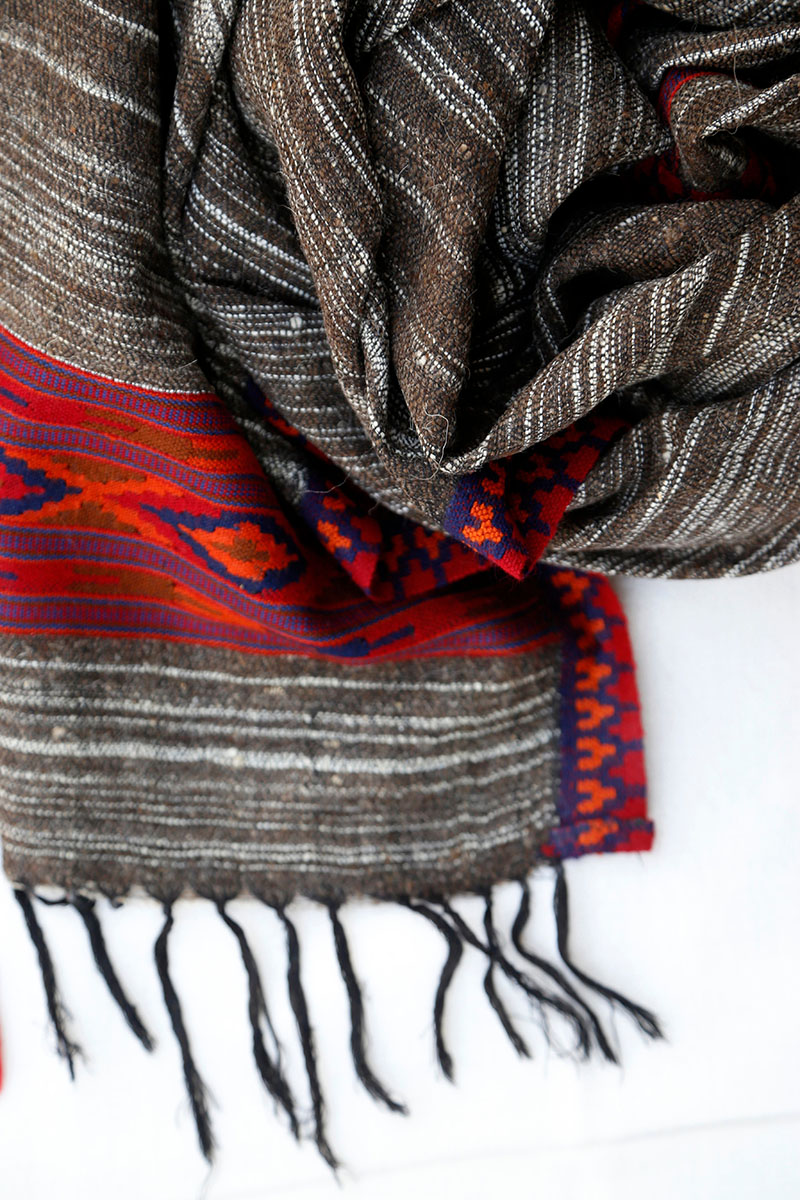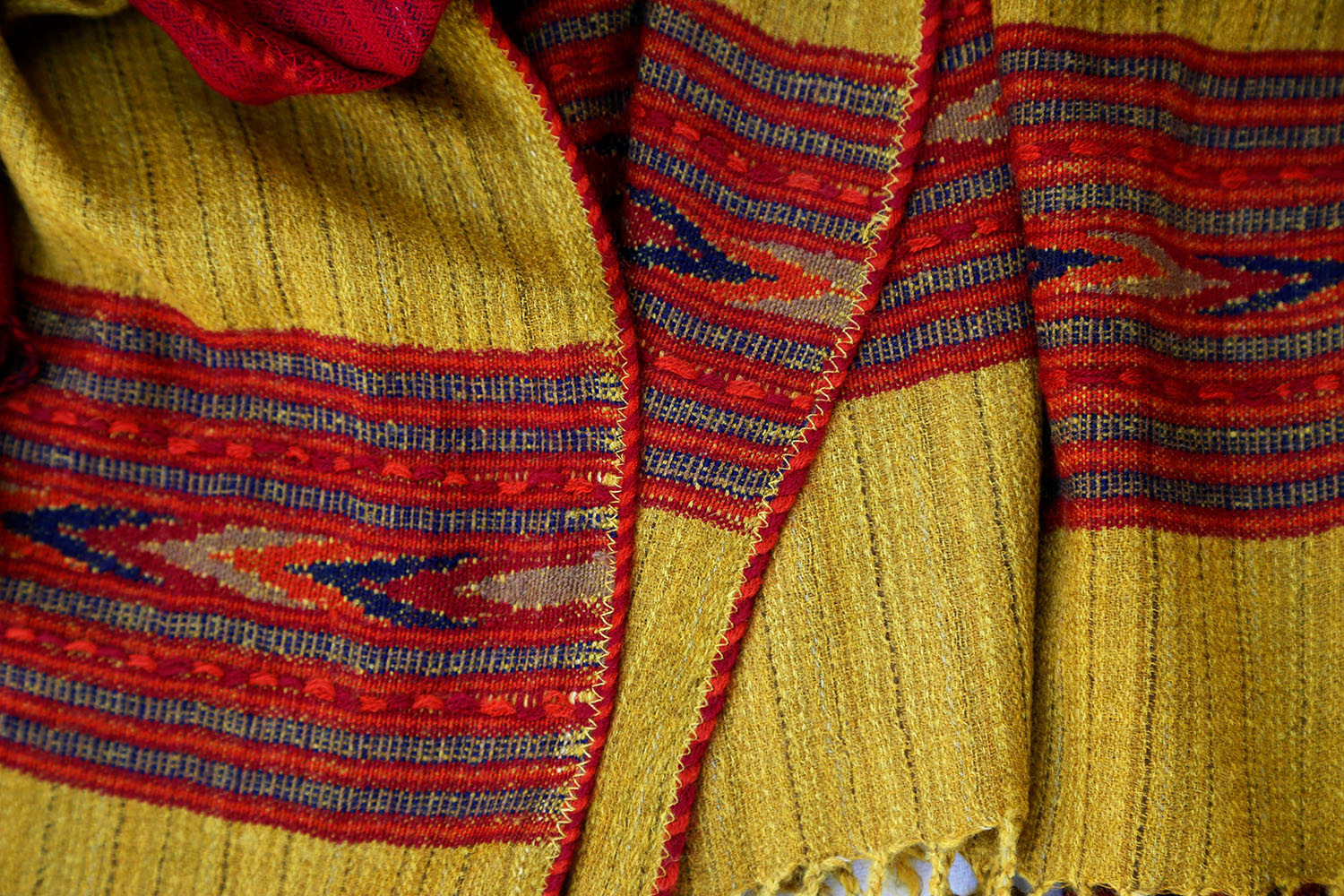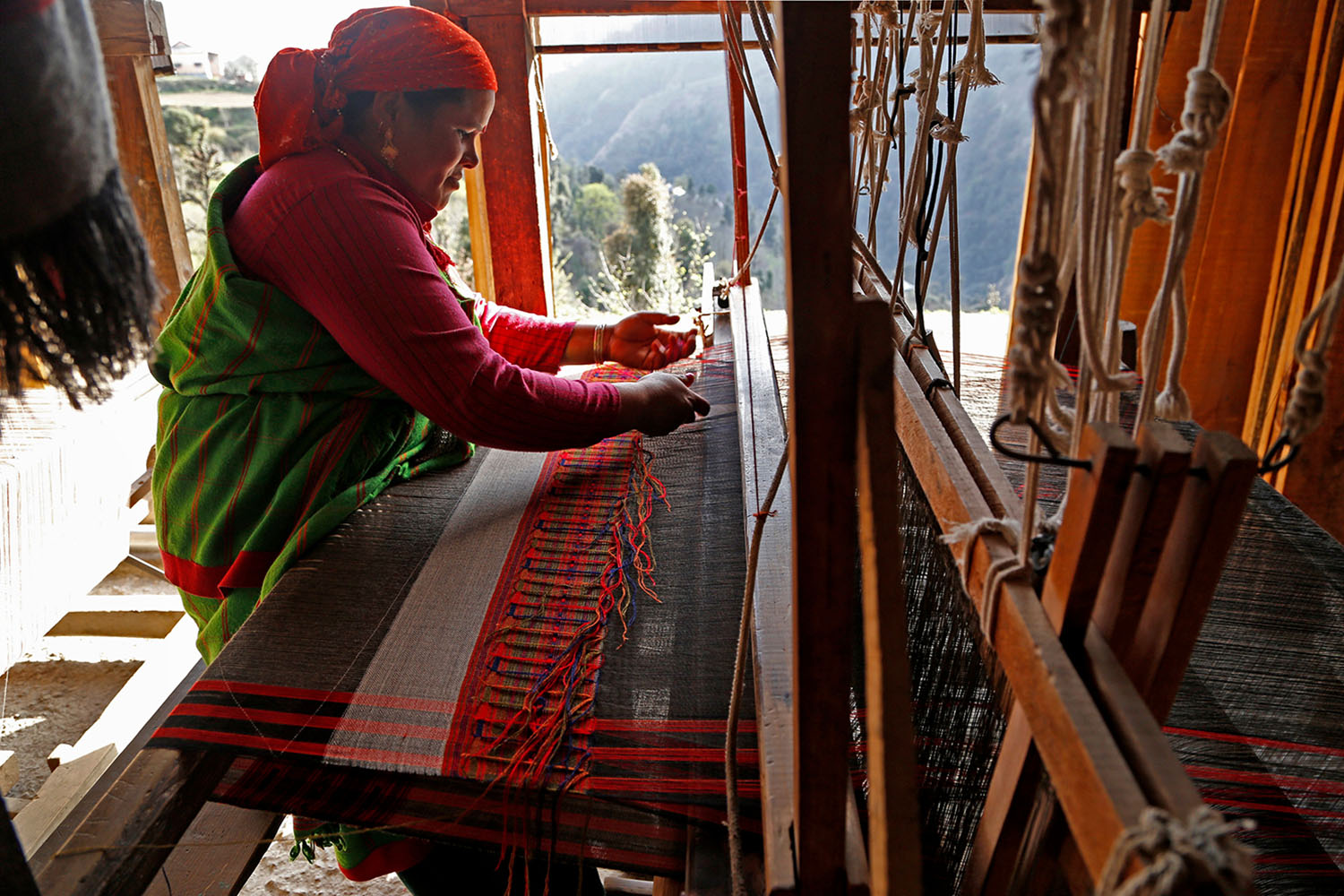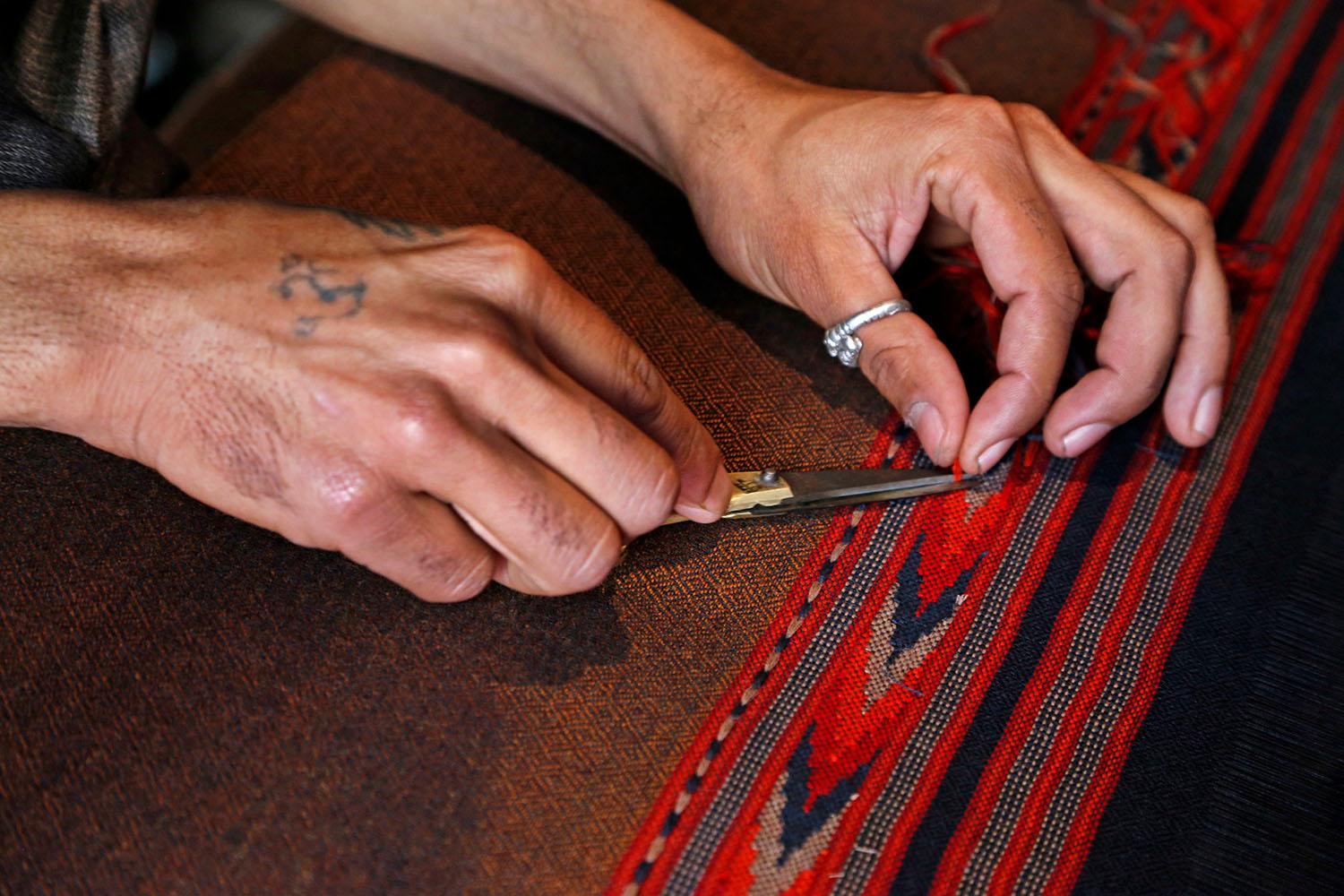ARTICLE
Kullu Shawl
Traditionally, the shawls made from local wool are woven on pit looms, whereas commercial or fine wool shawls are woven using a frame loom or jacquard loom. Kullu shawls can be woven using both the throw-shuttle and the fly-shuttle technique, with the latter producing more uniform fabric at a faster speed. The fly shuttle is first fixed with the required weft yarn before being passed through the warp using the twill-weaving process. The warp wool yarn is first set up by rolling the yarn onto a warping drum through which it is set tightly on the warping beam. Once the required amount of warp is set up, it is mounted on the frame loom, after which, the warp yarns are pulled over the loom and threaded, according to the design, through healds and the reed before being wound around the front beam of the loom. The weaving process of Kullu shawls is undertaken by both men and women. Once woven, the threads at the ends of the shawl are tied together to create tassels. As a final step, the shawl is washed and dyed in case chemical colours are required.
The pattis on the shawls can be woven separately on small, narrow looms. The detailing on the border are added using the extra-weft technique, after the main pattern has been woven. Common patterns include geometric designs, chabi (keys), birds, dabbidar kirk (spotted snake), diwar-e-Chine (Great Wall of China), guddi (doll), gulab (rose), gyatung, kangha (comb), leheriya (waves), tara (star) and mandir (temple). The border patterns are woven without the use of graph paper or sketches, using the dovetail or the slit tapestry technique. Then, the pattis are machine-stitched at the end of shawls, or as decorative elements in bags, hats or other products. The patterns are rendered in bright primary colours such as red, green, blue, yellow, pink, orange and white, although increasing commercial demand has led to a shift in the colour palette to muted pastel shades.
Kullu shawls are one of the foremost handloom products that contribute to the economy of Himachal Pradesh, with nearly every family in the region involved in making the shawls. Of the over twenty thousand weavers in the area, nearly sixty per cent are occupied in producing the shawls collectively or as part of weavers’ cooperations. The raw material is supplied to cooperatives by organisations such as the HP Apex Weavers Society, who supply the materials to individual weaving clusters and groups engaged in the craft.
The shawls received the Geographical Indication (GI) tag in 2004. Today, they are sold in registered cooperative shops and local markets throughout Himachal Pradesh. Commercial shawls are woven using mill-spun and chemically dyed merino wool, with bright acrylic yarn used for the patterns. The Himachal Pradesh Handloom and Crafts Cooperation also signed an agreement with e-retailers such as Flipkart and Amazon in 2021 to facilitate the sale of handloom products online in an effort to counter the effects of COVID-19 on the markets and tourism of the state.
Bibliography
Our website is currently undergoing maintenance and re-design, due to which we have had to take down some of our bibliographies. While these will be re-published shortly, you can request references for specific articles by writing to hellomapacademy@map-india.org.











